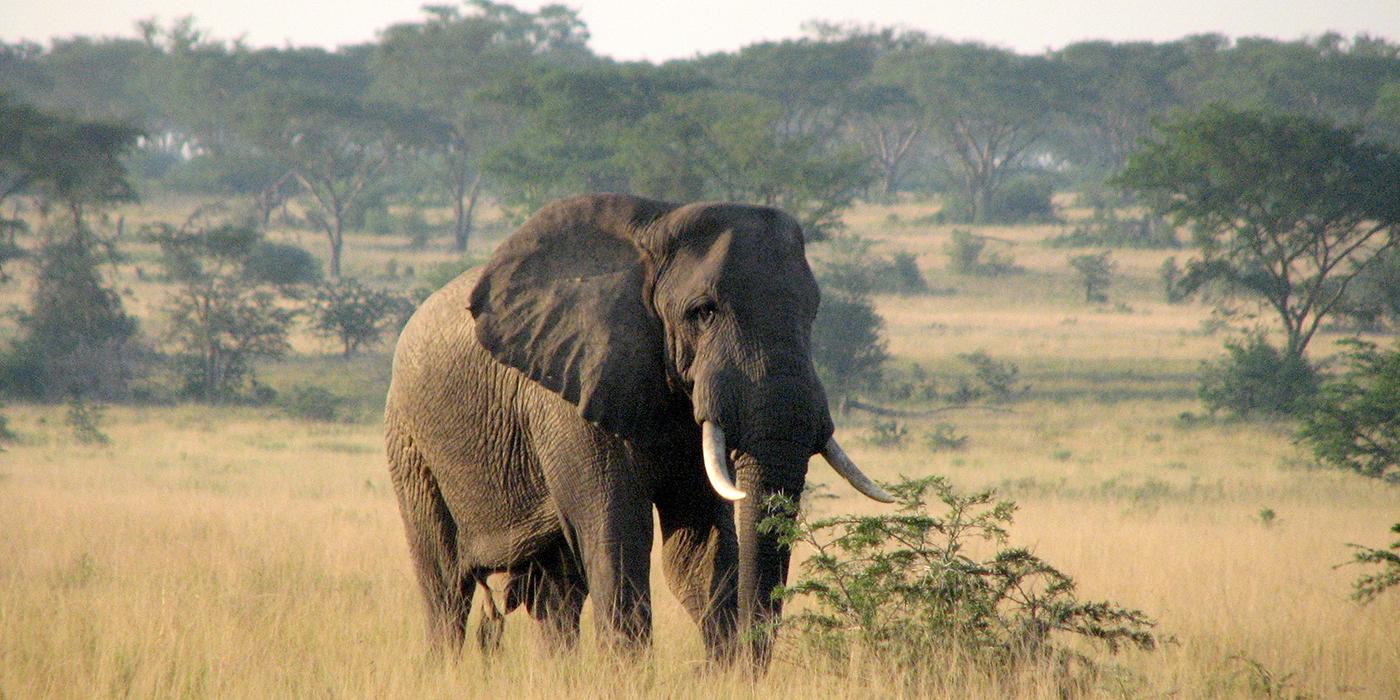Genetics and Animal Behavior
Scientists at the Smithsonian's National Zoo and Conservation Biology Institute's Center for Conservation Genomics conduct studies that use genetic methods and markers to help understand an animal’s behavior or ecology.
Before the advent of DNA analyses, scientists who studied the behavioral and ecological interactions of individuals and species usually had to do so only by making intensive field observations or conducting experiments. The development and application of variable DNA markers, especially to non-invasively sampled biological materials, has greatly improved the ability to determine what animals are actually doing in nature. That is, with whom are they mating, to whom are they related, how much they move around, and how much hybridization occurs between species. Not only do DNA analyses allow us to more accurately document animal mating and social systems, but this information often helps with conservation management of the species.
CCG scientists are pioneers in developing and applying DNA methods to assess kinship and mating systems in a wide diversity of species. Some of the species who’s behavior and ecology studied over the years include African wild dogs, common loons, gray and fur seals, Hawaiian honeycreepers, bats, sandpipers, penguins, wooly monkeys, grasshopper sparrows, Assateague horses, invasive mosquitoes, parrots, kit foxes, cowbirds, and crows. Here are a few examples from past and current research:
- Kinship and inbreeding in African elephants: CCG scientists used non-invasive DNA analysis of offspring to discover that elephants avoid mating with close relatives (inbreeding) in nature. The next mystery to solve is how female elephants know they are related to and avoid potential suitors, which is especially odd when they have never met them. Using genomic methods may help to figure this out.
- Extra-pair mating in songbirds: In many species of birds, females will mate with males to whom they are not paired (and vice-versa). Extra-pair mating has been found to be more common in temperate region birds than tropical, and in songbirds more than other types of birds. However, CCG researchers surprisingly found that some temperate zone songbirds, like phainopeplas in California deserts and chaparral, and Carolina wrens in Alabama woodlands, do not commit extra-pair mating. It is still a mystery as to why these two species differ from most other temperate zone bird species.
- Paternity of translocated desert tortoises: As part of a Department of Defense-supported mitigation plan for the threatened desert tortoise, more than 500 tortoises were moved (translocated) from a military base in the Mojave Desert to adjacent Bureau of Land Management land where other tortoises already lived. Four years later, none of 92 offspring tortoises tested with DNA markers were fathered by a translocated male, while translocated females produced offspring roughly in proportion to their representation (about 45%) in the merged population. The DNA analysis revealed an unexpected and hidden cost of translocation, but not why the males that were moved were unable to successfully breed.
- Kinship and cooperative breeding in babblers in Borneo: As part of a larger collaborative study on genetics, parasites, and social and mating systems of songbirds on Mt. Kinabalu in Borneo, CCG researchers are using DNA markers developed by next generation sequencing methods, to measure kinship and extra-pair mating success in groups of cooperatively breeding babbler species (in which some individuals, called “helpers,” will assist a mated pair to raise their offspring). For two babbler species, CCG scientists found contrasting social systems. In the chestnut crested yuhina about 50% of helpers were related to one or both of the parents, while this number was only about 20% for the gray-throated babbler. In the gray-throated babbler, about 25% of the offspring resulted from extra-pair mating, and male helpers fathered most of these regardless of their relatedness to the breeding pair. However, in the chestnut crested yuhina about 20% of the offspring were fathered by male helpers, but only unrelated males gained such extra-pair mating benefits. The DNA markers enabled scientists to understand how cooperative breeding can differ in its benefits, even among related species.
More recently, CCG scientists have used genomic and next generation sequencing methods to develop many more DNA markers than traditional methods, which enables greater power to identify kin. In addition, scientists can now use particular genomic methods, such as genome wide association studies (GWAS) or gene expression analysis, to help to understand the genetic basis of certain behaviors, like migration. The field of conservation genomics may provide insight why animals behave as they do.
In most of these studies CCG scientists conduct DNA analyses, but collaborate with Smithsonian or other scientists who conduct behavioral, ecological and conservation research in the field.












